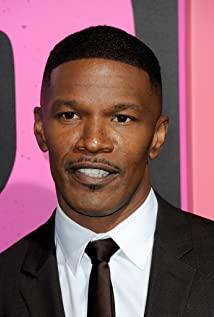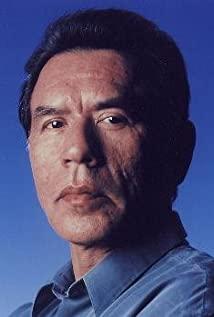What is "Spark" as the core concept of the whole show?
"Soul" involves a very rich worldview: Spark as the core of the soul, the mysterious world before and after death, mysticism, moon mythology, Jungian psychology, and so on. These settings do not come out of thin air, but are derived from the obvious studies in the history of human thought, especially the far-reaching Platonism. Therefore, this film has extremely deep cultural connotations, and most viewers can appreciate it during the viewing process. However, in terms of the specific knowledge background, it is generally unfamiliar in China, so many questions about "what is behind it" inevitably arise. The magic blue is analyzed here one by one.
What is Spark?
The development of the film has always revolved around a concept called "Spark". It seems to be a part of the soul, which cannot be obtained through teaching, and can only be stimulated by oneself. But in the film, the idea of treating it as the "goal" of life is denied. So what exactly is Spark? Why is it so important. This needs to start with Plato's concept of "three parts of spirit and flesh".
Plato: Three Points for Body and Soul
Although the mainstream of modern science is the monism of mind and body, "body and body duality" is still a concept that most of us are accustomed to. Different people may understand "spirit-body", "mind-body" and so on. In short, we can realize that human beings-ourselves-are composed of a spiritual part (soul/heart/spirit) and a material existence (body/substance). The so-called "thinking things come true" and "subjective initiative" are all based on this dual concept.
But in the more distant history of thought, "people" are often considered to be composed of three parts instead of two parts: mind (Nous), soul (Soul), and body (Matter).
The earliest documented discussion of this point in the West was the philosopher Plato in the 4th century (427-347 BC).
In "Utopia", he divides the human soul into three parts: reason, spirit/emotion and desire. He uses three images as a metaphor: "rationality" is a human being, "spirit" is a lion, and "desire" is a classic monster of ancient Greece-Chimera. Reason is dominant among the three, struggling to control the impulses of the two animals. Among them, the lion as a "spirit" is relatively noble, and human emotions such as happiness, anger, sorrow, and joy are more likely to be subject to rational control; while the "desire" like monsters is even lower, which is the instinct of the body, blind and stubborn.
It can be seen that these three parts are divided into three layers from high to low. In another important document describing the creation of the world, "Timeou", Plato continued the three-layer structure and made a more "theological" argument:
"Furthermore, he (the creator) saw that reason cannot belong to anything without a soul. As a result of this thinking, when he constructed the world, he put the mind (νοῦς, Nous) into the soul (ψυχή, Soul). ), put the soul into the body, thereby making the work he does perfect in nature."
—— "Timeou" 30b, translated by Dai Ziqin (Note: In the original translation, νοῦς is translated as "rationality", but it is not the same word as "rationality" (λογιστικόν) in "Utopia". To avoid confusion, use it instead. In the works of later Platonists, it is more often translated as "mind")
The triple structure here is slightly different from the one in "Utopia", but the general structure is similar. "Soul" is no longer the sum of the three-layer structure, but retreats to the middle layer, between the body and the mind. The lowest layer of material becomes the body, which corresponds to "instinctive desire." The highest "mind" corresponds to the "rational" level. The Greek equivalent of mind is written in Latin letters Nous (also often translated as "mind" or transliterated as "nus"), which is the most advanced part of human beings. This division was widely absorbed and developed by Platonism in later generations, and thus formally established the three-part structure of human spirit and body:
Mind/Mind/Nous (Nous, the higher part of spirituality) 丨Soul (Soul, the lower part of spirituality) 丨Body (Matter, the material part)
This is widely inherited in later Western cultures. In addition to becoming the consensus of several academic theories (Platonism, Hermeticism, Gnosticism) in the Hellenistic era, it also influenced Christian theology. Christianity also divides people into three levels: "spiritual", "natural (soul)", and "physical" according to which part of their body they value and believe in.
This concept is also widespread in other cultures. In traditional Chinese folklore, people are considered to be divided into three parts: soul, soul, and body. The first two are non-material. The soul belongs to the sky and is partial to transcendence; the soul belongs to the earth and is partial to the secular. The ancient Egyptians believed that humans were divided into three parts: "Ka" (Ka), "Ba" (Ba) and "Body". "Ka" is the spiritual and rational part of the astral body, which is more inclined to human nature; "Ba" is the physical and instinctive part of the astral body. The resurrection of people in the underworld is the recombination of "ka" and "ba".
In the Buddhist Prajna Paramita Heart Sutra, people are considered to be a complex of "five aggregates" (material, feeling, thought, action, and consciousness), and these five aggregates have their own independence. There is no "integrated soul" or "core of the soul" above it, so there is no "essence" in man, and "I" is an illusion. This is the theoretical basis for the rejection of "ego clinging" in Buddhism.
If you compare the two, you can think that Plato's view of the soul is an onion. As long as you define a certain baseline, you can define it as "human nature". But the soul view of the Buddhist Heart Sutra is like garlic. There are only a few equal garlic cloves, and they are not subject to each other. No matter how they are defined, there is no "human nature".
Judging from the special status of spark, the concept of soul in the movie is closer to Platonic, and is quite different from that of Buddhism.
It should be noted that in Timio, such a triple structure applies not only to people, but also to the entire world. In Plato's writings, the entire world is described as a living unity, which was also born by the creator of the world. The mind is put into the soul, and then the substance is used to create a "body" for it. In this way, "people" and the world are "isomorphic", which provides an important principle basis for the follow-up Pan-Platonic world view——
The world is divided into several levels and roughly divided into the divine "upper world" and the material "lower world"; the upper world dominates the lower world; the law of upper and lower isomorphism, that is, the sentence "it is above," in the later "Cuiyulu" As above, as below”, this has become the first law of all schools of Western mysticism in later generations.
Hellenization: Plato to Platonism
More than ten years after Plato's death, an incident occurred that upended the entire world.
As we all know, Plato had a famous student named Aristotle. Aristotle had a student named Alexander, who was then the prince of the Kingdom of Macedonia in northern Greece. This Plato student was only 20 years old when he came to the throne, and then it took ten years to conquer most of the world that the Greeks knew at the time. Persia, Egypt, Mesopotamia, Asia Minor, Central Asia and the edge of India, which have a long history in the East, are all included in his territory.
The young monarch built many Greek-style cities on the vast lands of the East, and Greek became the official language of these places. This began the centuries-long fusion of ancient Eastern culture and Greek culture. This period was called "Hellenicization." The broadly Hellenistic era lasted until Christianity became the state religion of the Roman Empire in the fourth century AD, and continued to exert a continuous influence in the Byzantine Empire for the next thousand years.
Greek philosophy—especially Plato philosophy the most prominent—was widely circulated in the East. At the same time, it was continuously interpreted by Orientals—especially Egyptians, Persians, and Jews. Lean towards theology and mysticism.
"Platonism" is the product of the period. The so-called "Platonists" are not members of Plato's creation of the school, but some scholars who spontaneously study and interpret Plato's works. They regard themselves as the inheritors and promoters of Plato's theory, but they have certain theoretical originality and are generally integrated into Eastern thought. Two periods of "Middle Platonism" and "New Platonism".
In addition, those who inherited Plato's thought in the Hellenistic era include Hermeticism, which is the source of Western occultism, and Gnosticism, which is characterized by "anti-world". These theories are collectively referred to as "Platonic Orientalism" by contemporary occultist and cultural historian Ut Hanehlav. Most of the cultural background in the film comes from this big family.
Plutarch: Soul in the Center
In the Mind Academy in the movie, 22 such a spirit body without Spark is a Soul in the sense of Plato. It is a low-level part of spirituality, in an intermediate state, and only possesses basic emotional abilities. On the one hand, it needs to be combined with the mind (Nous) to obtain "rationality"; on the other hand, it needs to be combined with the body to produce "feeling".
Between the first and second centuries AD, Plutarch, a mid-Platonist (46-120, Greek writer, philosopher, and historian of the Roman Empire), developed Plato's concept of the trine of body and soul. In his book "On the Face of the Moon", he explained the above theory:
Most people correctly think that people are a mixture, but mistakenly think that they consist of only two parts. The reason is that they think that the mind is a certain part of the soul. Therefore, they make no smaller mistakes than those who think that the soul is a part of the body, because as much as the soul is superior and sacred than the body, the mind is so much superior and sacred than the soul. The result of the mixture of soul and body is irrational or emotional. The union of mind and soul produces rationality; the former is the source of suffering and happiness, and the latter is the source of good and evil. —— Plutarch, "On the Face of the Moon," 28, translated by Kong Xuyou
Plutarch believes that these three have different sources: the mind comes from the sun, the soul comes from the moon, and the body comes from the earth. The soul is between the mind and the body, and connects the two. Just as the moon (in the astronomical concept of the time) lived between the sun and the earth and reconciled the two.
Inanimate things (materials) have no power and are easily affected by external factors, while the mind is emotionless and independent; but the soul is a mixed and intermediary thing-Plutarch's "On the Moon" 2 eighteen
In the Mind Academy, 22 demonstrated that as a spirit body, there is no feeling, because it is not combined with the body, because the "feeling" comes from the body. And the "Spark" (Spark) that the soul must have in reincarnation undoubtedly corresponds to the mind (Nous).
The soul and the mind shape each other, and then surround the body in all directions to obtain an impression of its shape. In this way, even if it is separated from either side for a long time, it is still appropriately called because it maintains a similar appearance and imprint. As an image. —— Plutarch, "On the Face of the Moon," 28
In the Mind Academy, there is no "spark", that is, a soul that has not been combined with Nous, and cannot go to the earth to be combined with the body. This is also described in Plutarch's writing:
And those souls who are ambitious, energetic, and irritable, and those who are obsessed with the body... When they are stimulated by irritability and impulsivity and are drawn from the moon to another reincarnation, the moon prevents them from sinking into the earth and keeps them from sinking into the earth. Summon them back and bind them with magic power. -Plutarch, "On the Face of the Moon," 29
The reason for this rule, as in the previous theory, is that no reason will be produced without the soul being combined with Nous. If such a soul is combined with the body, it will become a monster that acts solely on emotion and instinct, causing disasters on the earth. Monsters in Greek mythology, such as giant python skins, all exist in this way.
Because if they occupy a body with emotional faculties detached from reason, this is not a matter of stability and harmony, and should not be underestimated. Creatures like Tityus, Typho, and Python, who occupy Delphi with arrogance and violence and confuse oracles, belong to this category of souls. They lack rationality, succumb to emotions, and go astray because of delusions; but even for these souls, the moon brings them back to herself in time and makes them orderly. -Plutarch, "On the Face of the Moon," 29
The movie also embodies a common view of the soul, that is, the soul is the cause of the body's movement. The protagonist went into a coma twice, both of which resulted in the separation of the soul. But once the soul manages to return, the body comes back to life. This concept is common in all cultures, and Platonism is no exception. As Plutarch said above, "Inanimate things (materials) have no power in themselves".
Hermeticism calls this group life-giving existence "Pneuma" (Pneuma). This term is related to "breathing", and it comes from the ancient observation of the phenomenon that "only the living breathes" and believed that breathing brings life to the body (even from a modern perspective, this concept cannot be wrong). The soul is wrapped in the breath, drives the breath, and then gives the body vitality through the breath.
The soul is breathing; the breathing passes through the veins, arteries, and blood, moving living things, and holding it up by speaking. —— "Hermes Cheats" Volume 10 Hermes Theory: Key: 14. Xiao Xiao translated
Spark: The Divinity of Nous
As mentioned above, the spark (Spark) mentioned in the movie is the mind (Nous) in Platonism. In Plutarch's writings, it originates from the sun, reaches the moon that produces the soul, and is injected into the soul. Only when the soul becomes complete and rational, it is allowed to reach the earth and combine with the body (material).
Under Plato's three points of spirit and body, the mind is the most advanced part of man, the divinity in man, and represents man's transcendence. So in the movie, at the moment 22 receives the seed that fell from the tree, the soul is filled up and spark flashes out. The protagonist is playing, thinking of those ordinary but precious experiences in life, and leaving tears of satisfaction, spark is fulfilled.
When they experience their spark (Nous), they all come from experiencing the beauty that transcends life from their lives, that is, from "nature" through "beauty", they feel the divinity that transcends nature.
In the fragments of Hermeticism, there is a very beautiful description of mythology, which is exactly a metaphor for this experience:
The Son of Man has all the power to the orderly universe of mortal things and irrational animals. He breaks through the dome and stoops to observe the structure of the orderly universe, thus showing the beautiful form of God to the lower-level nature.
When naturally seeing the handsome and not excessively beautiful and containing all the energy of the rulers and the form of God, she smiled out of love, because she saw the most beautiful form of the Son of Man in the water. Appearance, I saw its shadow on the ground.
When the Son of Man sees a form similar to himself in the water, which is exactly what it looks like in nature, he falls in love with it and wishes to live in it.
Desires and behaviors arise at the same time, and he dwells in an irrational form. Naturally hold on to her loved one, hug him all around, surround him, because they are lovers. "
—— "Hermes Cheats" Volume 1 Hermes Theory: Peimandrees: 14
The "son of man" was created by a god and is the source of the divinity in man; "nature" is personified as a goddess, and is the source of materiality in man. Man is the result of the combination of the two, and therefore has a dual nature-immortal spirit and mortal body. Pure material "nature" is not "world". Only when human spirit and material encounter "natural", nature becomes "world" and begins to have "meaning".
In Hermeticism, Nous is regarded as the second god who created the world, created by the Supreme God, and at the same time an existence that accompanies the human soul. A pious and wise person will possess Nous and gain the ability to know God; on the contrary, if a person is obsessed with the feelings of the body and is blinded by it, he will forget his divinity, be abandoned by Nous, and continue to be in the material world. Tortured by desire. In the movie, those states blackened by a certain obsession with the material world are the portrayal of the latter.
Such a person keeps longing for unsatisfactory desires, struggling in the dark without satisfaction. Tortured him and made the fire burn more vigorously on him. —— "Hermes Cheats" Volume One Hermes Theory: Peimandrees: 23
The experience of Nous reminds people of his sacred origin, gradually getting rid of the shackles of matter and body, and returning to the "upper realm" of divinity. The levels of the "Upper Realm" continue to rise, eventually breaking through the boundaries of the universe and returning to God.
"Beauty" has a lofty status in Hermeticism. God is the most beautiful, and all the beauty in the world exists because of the beauty of God. Beauty can make people's mind, soul, and body sublimate at the same time, and get close to the divine.
This beauty illuminates his entire soul (Nous), ignites his entire soul (Soul), pulls it upward through the body, and beauty turns his whole person into the essence. —— "Hermes Cheats" Volume 10 Hermes Theory: Key: 14
In the movie, when people are fascinated by music, painting, meditation, etc., they will arrive at the same plane as the spiritual academy. It also reflects that through the "beauty", experiencing one's Nous, inspires one's own divinity, and the spirit enters the "upper realm" at that moment.
In the "Nag Hammadi Codex" (Nag Hammadi Codex), the Hermetic chapter "The Eighth and Ninth", a similar situation is mentioned-the instructor guides the beginner through Specific inner practices and rituals allow the spirit to reach the "eighth heaven" and "ninth heaven" where the upper realm is closest to God. In these sacred realms, all beings are singing a chorus praising God.
In the Plato system, the chords of music are divine. Because the scale of music represents the sacred mathematical ratio-this ratio is consistent with the movement of the seven celestial bodies (sun, moon, gold, water, fire, wood, and earth). And these seven celestial bodies are gods themselves, giving time to the world. Therefore, numbers and proportions are the origin of the universe, and playing and enjoying music can reach the divinity and stand shoulder to shoulder with the gods.
In the seemingly ordinary world and the experience of life, one can realize "beauty", so as to understand the divinity that transcends the world, and obtain the "meaning" of life from this divinity. This is the true meaning conveyed by the concept of spark in the movie.
In a sense, this is also a metaphysical interpretation of "art comes from life and is higher than life".
Gnostic Spark and Twenty-Two
The word Spark itself, as a meaning related to the soul, first appeared in the Gnostic classics. Gnosticism is also an important ideological and religious movement in the Hellenistic era, which arose in the first century. The influence spread throughout the Old Continent, from the Mediterranean coast to the Xinjiang region of China. There are many genres, some of which belong to Christian sects, and others have nothing to do with them. Common features of all schools, dualism and "anti-world" values. Let's take the Valentinite as an example.
Gnosticism believes that the world we live in is material, dark and sinful. The world was created by a low-level and evil god, Demiurge, the creator, and it was full of pain and sin. Outside of this world, there is a glorious realm "Pleroma" (Pleroma) that is purely bright, supremely good, and divine, which belongs to a true, unknown supreme god—God. This God is uncreated and represents the infinite one. He produced six origins, which represent the integrity of Pleuroma. These six origins produced ten (the decade) and twelve (the dodecade) angels respectively. The former are ten super universes (aeons, also translated as "shifting"), and the latter are ten universes (eons).
Adding "ten" and "twelve" is "twenty-two", which should be the source of the name " twenty-two " in the movie .
Human beings were born because a part of the sacred light belonging to Puleluma flows into the material universe. The evil creator, De Muge, imprisoned these sacred lights in the material world, and created human bodies, combined these lights with the body, and further bound them. Everyone’s body belongs to the light of Proma, called “divine spark”, which is the source of the term “spark” in the movie. Like Nous in Platonism/Hermeticism, it is a person. The divine part of the body. Man is the product of the combination of the "spirit" (spark) belonging to the world and the "body" (material, body) belonging to the world. The latter is evil and should be discarded.
Many schools of Gnosticism also accepted Plato's three-pointers.
Human beings are divided into three categories according to the level of consciousness of their origin: the spiritual ones who long for God; the materialists who have no memory to care about the origin; and the minded ones between the two (The psychics), these wandering people move from the world of perception to a kind of supreme anxiety, but they don't know what to hold on. ——Abel Camus, "Ration and Sacred" Chapter 2 Gnosticism, translated by Zhu Jiaqi and Ye Renjie, Liang Zhonghe
It can be seen that the "spiritual" level is the person who is awakened to the "divine spark" in the body, corresponding to the Platonic Nous. People at this level will work hard to understand the transcendent knowledge "Gnosis" (the etymology of "Gnostic" Gnostic), break away from this dark material world, and return to the prosciutto.
The worldview in the movie has a very positive attitude towards the "world" (life on earth), so there are not many places where Gnostic elements are reflected. But there is a classic scene, was twenty accidentally entered thru the body, feeling very sick, and sighed. "I was surprised to be trapped within the body of this one, disgusting."
This sentence is very Gnostic. " Prisoner " is the most typical Gnostic image. This world is the cage of spark, the divine component of the prisoner, and the body is one of the more tightly sealed cages. Under the Gnostic worldview, there is no "death" that we usually call the separation of soul and body. The way of being combined with the body in the world is itself a kind of "death". The usual "death" cannot separate the soul (spark) from the body, because once it leaves one body, it immediately enters another body— —That is, reincarnation — spark is still not free. Only by comprehending "Gnosis" can we find the path to freedom.
The grief and pain I endured in the robe of the flesh, they sent me and threw me into it. I have to take it off many times, put it back on many times, and break the struggle again and again, but I can't see the life in its sh'kina (sh'kina). —— "The Secret Collection of Manda School" (Ginza. Der Schatz oder das Grosse Buch der Mandaer) P45
Of course, there is no such negative and dark conception of the body and the world in the movie. Twenty-two's Gnostic sentiment quickly proved to be just her misunderstanding. She finally fell in love with the world and wanted to stay in the world for a long time. And the "material addiction" like appetite is also affirmed. The film "Soul" clearly "loves the world" and is anti-Gnostic.
Jung’s "Selfization"
For the various metaphysical soul doctrines derived from Plato, the twentieth century psychologist Carl Jung has a set of interpretations based on psychology. Jung divided the human psychology into three parts: individual consciousness, individual unconsciousness and collective unconsciousness. Only individual consciousness is what we can clearly perceive and control. The latter two are hidden in the parts that we usually cannot perceive, but they have a real and huge impact on our psychology. The three together constitute a person's complete psychology, which Jung called "self". Among them, the collective unconscious part is a mental model that transcends the individual and is common to all mankind, and is composed of "archetypes". Archetype is a model that embodies the common and eternal theme of human experience. It will be externally manifested in a similar way in different civilizations in myth, religion, and metaphysical ways.
Jung called the ultimate goal of a person's spiritual growth as "individualization." It is to complete the integration of one's own "self" content, the most complete development of the spirit, out of a long-lasting state of peace and satisfaction. He believes that this is the process by which a person grows into "what he is".
Through a biological process, any creature becomes the creature it was destined to be from the beginning. Individuation is an expression of this biological process-no matter how simple or complex the process may be-Jung's Complete Works Volume 11
Jung believed that the process of "sanctification" in various civilizations, such as the return to divinity of Pan-Platonism, the "liberation" in Buddhism, and the "sage stone" in alchemy, are all "individualization". The external manifestation of a psychological archetype. In the movie, Twenty-Two and the protagonist, the calm and complete psychological experience of "divineness" and "insight", is highly consistent with the "self-nature" described by Jung. And spark, in the context of Jung, is undoubtedly the direction of everyone's "individualization". It is an internal, mellow, rather than external, secular, and quantifiable goal.
Due to space limitations, this concept will not be over-expanded here. There are a lot of relevant Chinese materials, and friends who are interested can check it out by themselves.
Looking forward to the next chapter: Worldview and life
In this chapter, the soul view of the movie named "Soul" is analyzed, which largely reflects the theme of the movie. In addition, the film still leaves a lot of content, its world view, what kind of world each person encounters before and after life, and what is the spiritual academy, are left to continue to be interpreted in (below).
View more about Soul reviews











